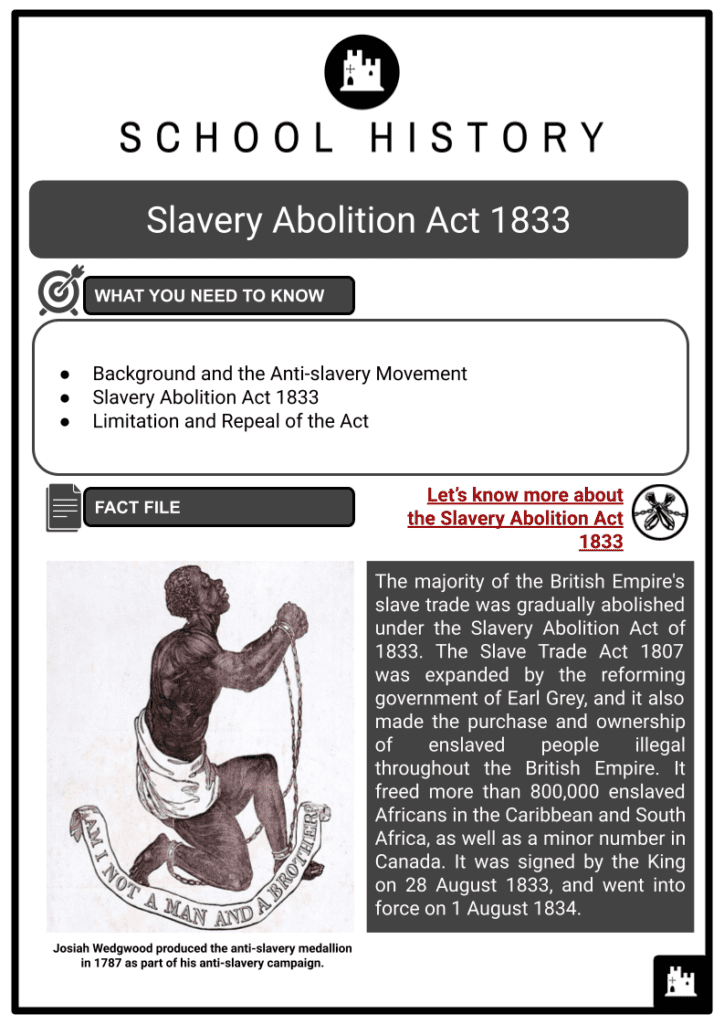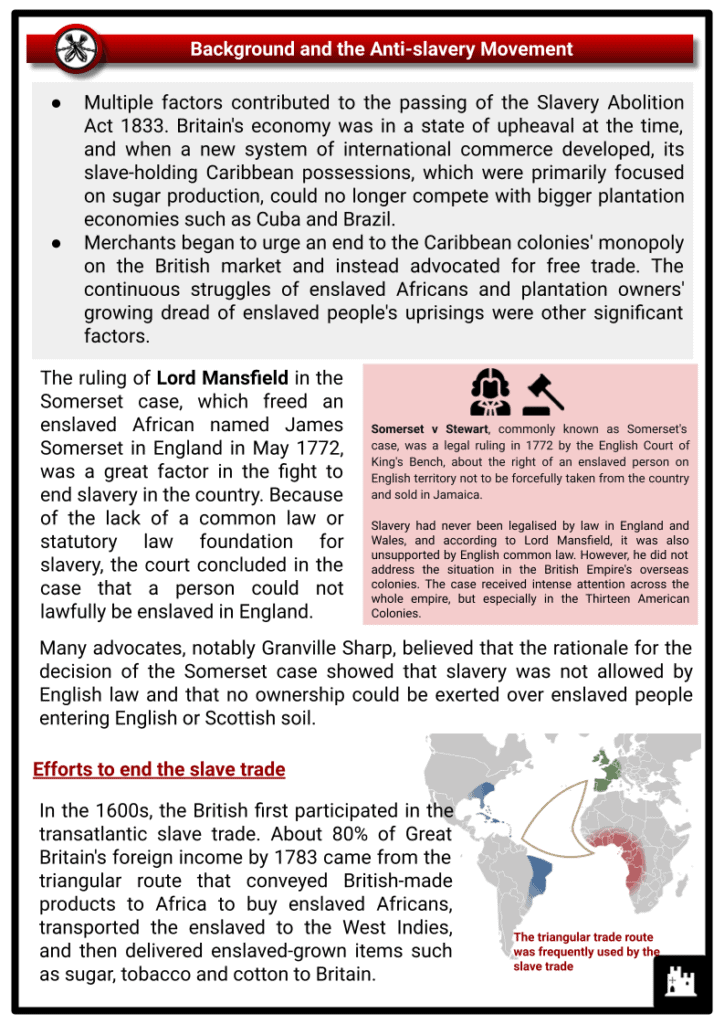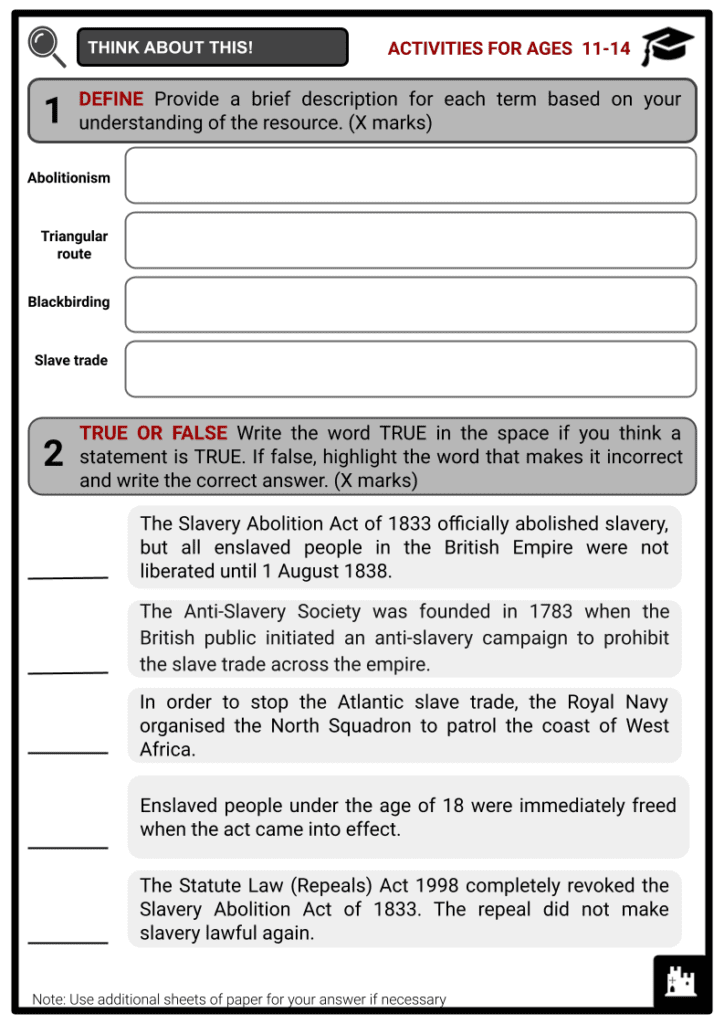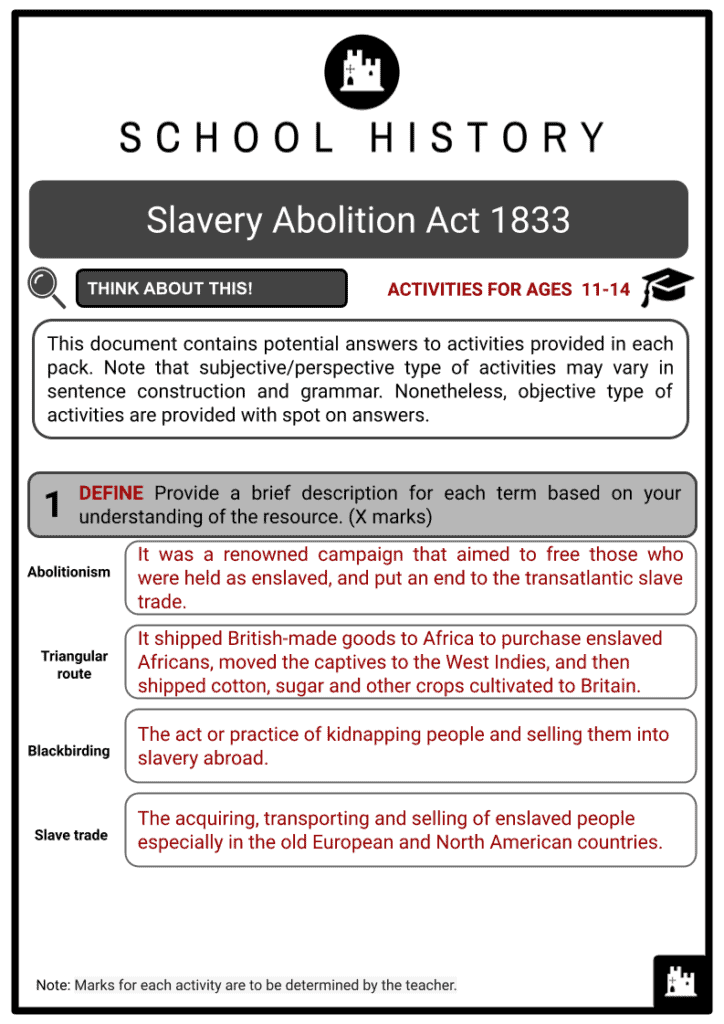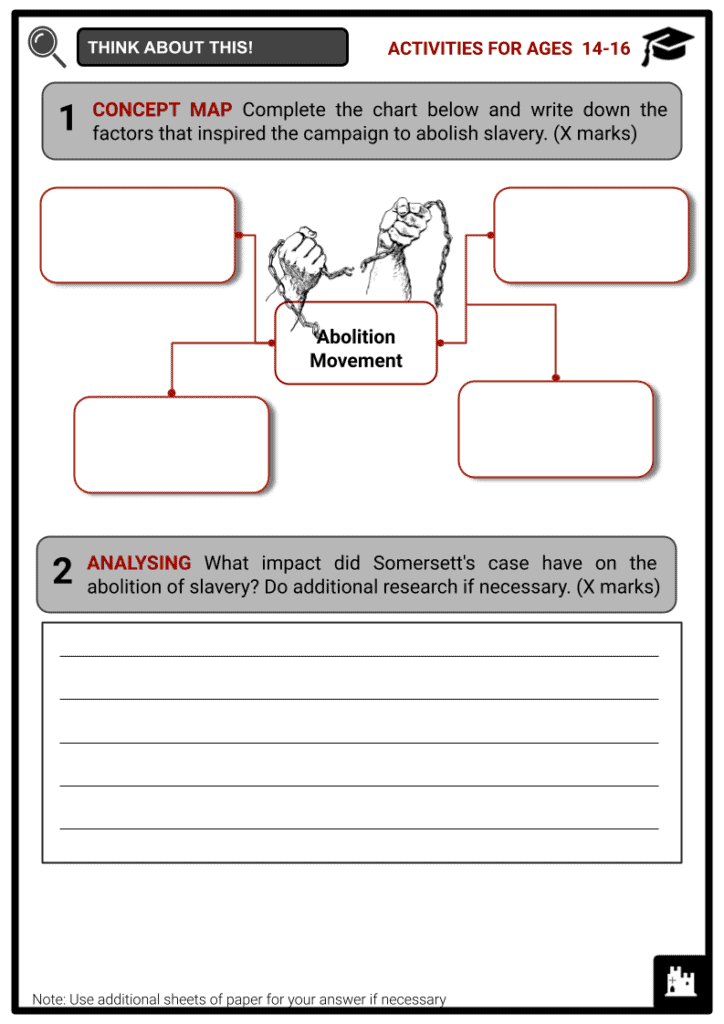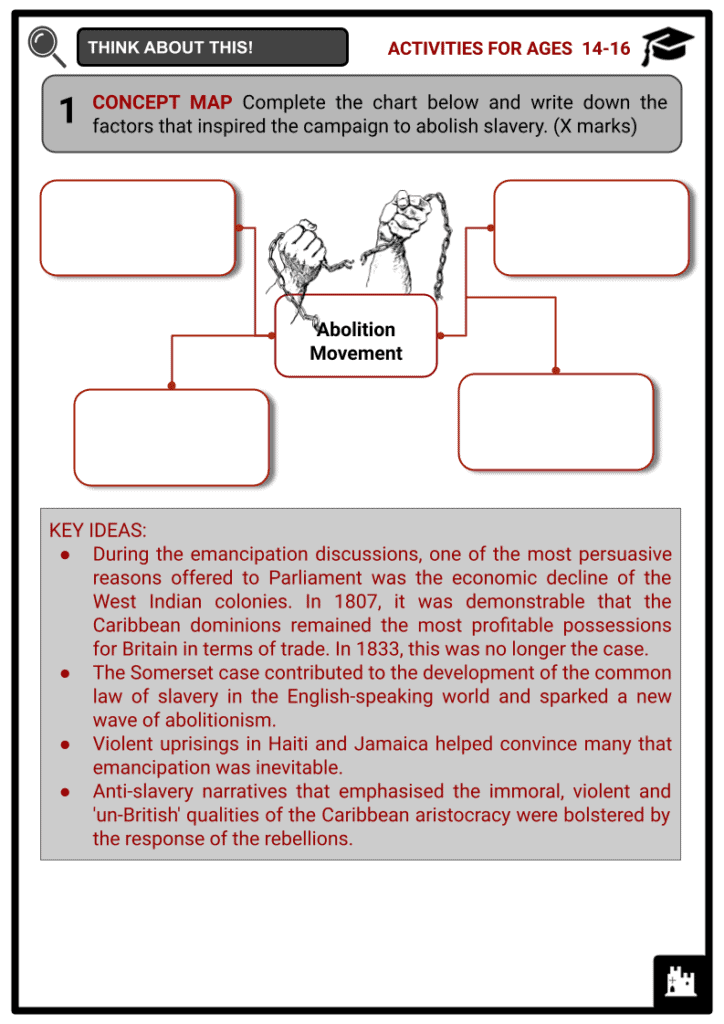Slavery Abolition Act 1833 Worksheets
Do you want to save dozens of hours in time? Get your evenings and weekends back? Be able to teach about the Slavery Abolition Act 1833 to your students?
Our worksheet bundle includes a fact file and printable worksheets and student activities. Perfect for both the classroom and homeschooling!
Summary
- Background and the Anti-slavery Movement
- Slavery Abolition Act 1833
- Limitation and Repeal of the Act
Key Facts And Information
Let’s find out more about the Slavery Abolition Act 1833!
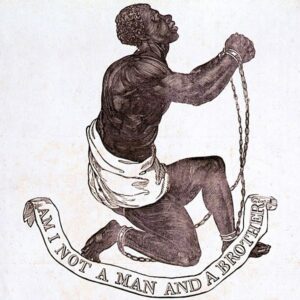
The majority of the British Empire's slave trade was gradually abolished under the Slavery Abolition Act of 1833. The Slave Trade Act 1807 was expanded by the reforming government of Earl Grey, and it also made the purchase and ownership of enslaved people illegal throughout the British Empire. It freed more than 800,000 enslaved Africans in the Caribbean and South Africa, as well as a minor number in Canada. It was signed by the King on 28 August 1833, and went into force on 1 August 1834.
Background and the Anti-slavery Movement
- Multiple factors contributed to the passing of the Slavery Abolition Act 1833. Britain's economy was in a state of upheaval at the time, and when a new system of international commerce developed, its slave-holding Caribbean possessions, which were primarily focused on sugar production, could no longer compete with bigger plantation economies such as Cuba and Brazil.
- Merchants began to urge an end to the Caribbean colonies' monopoly on the British market and instead advocated for free trade. The continuous struggles of enslaved Africans and plantation owners' growing dread of enslaved people's uprisings were other significant factors.
- The ruling of Lord Mansfield in the Somerset case, which freed an enslaved African named James Somerset in England in May 1772, was a great factor in the fight to end slavery in the country. Because of the lack of a common law or statutory law foundation for slavery, the court concluded in the case that a person could not lawfully be enslaved in England.
- Somerset v Stewart, commonly known as Somerset's case, was a legal ruling in 1772 by the English Court of King's Bench, about the right of an enslaved person on English territory not to be forcefully taken from the country and sold in Jamaica. Slavery had never been legalised by law in England and Wales, and according to Lord Mansfield, it was also unsupported by English common law. However, he did not address the situation in the British Empire's overseas colonies. The case received intense attention across the whole empire, but especially in the Thirteen American Colonies.
- Many advocates, notably Granville Sharp, believed that the rationale for the decision of the Somerset case showed that slavery was not allowed by English law and that no ownership could be exerted over enslaved people entering English or Scottish soil.
Efforts to end the slave trade
- In the 1600s, the British first participated in the transatlantic slave trade. About 80% of Great Britain's foreign income by 1783 came from the triangular route that conveyed British-made products to Africa to buy enslaved Africans, transported the enslaved to the West Indies, and then delivered enslaved-grown items such as sugar, tobacco and cotton to Britain.
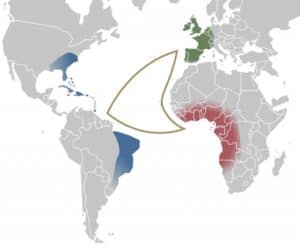
The triangular trade route was frequently used by the slave trade - The morality of slavery was first called into question by English and American Quakers in the late 18th century, sparking the British abolitionist movement.
- In 1783, the British public initiated an anti-slavery campaign to prohibit the slave trade across the empire, and in 1787, the Society for Effecting the Abolition of the Slave Trade was founded.
- The Society for Effecting the Abolition of the Slave Trade is also known as the Abolition Society or the Anti-Slavery Society.
- The group strove to raise awareness of the injustices of the slave trade. After the British Parliament approved the Slave Trade Act in 1807, the organisation stopped its operations and the international slave trade was abolished.
- By the late 18th century, the British became the world's leading advocates for the abolition of slavery, having previously been the major slave traders.
- In 1787, William Wilberforce wrote in his journal that his life's mission was to abolish the slave trade, before launching a 20-year campaign against the practice.
- On 12 May 1789, he delivered his first significant address on the subject of abolition of the trade in the House of Commons, arguing that the trade was morally repugnant and a matter of natural justice.
- He elaborated on the horrific circumstances under which the enslaved travelled from Africa to the middle passage. Relying on Thomas Clarkson's facts, he claimed that banning the trade would also improve the lives of enslaved people who already lived in the West Indies.
- The abolitionists exhibited an image of the Brookes slave ship to illustrate the inhumane conditions under which enslaved people were carried.
- The Slave Trade Act 1807 was approved by Parliament in 1807, prohibiting the international slave trade but not actual slavery. The bill was introduced at the same time as the anticipated Act Prohibiting Importation of Slaves by the United States, which was Britain's main maritime trade competitor. The penalties set by this law did nothing to discourage anyone from participating in the slave trade.
- After realising that the trade had continued, abolitionist Henry Brougham successfully introduced the Slave Trade Felony Act 1811 as a new member of parliament, which finally declared the transatlantic slave trade a felony across the British Empire.
- In order to stop the Atlantic slave trade, the Royal Navy organised the West Africa Squadron to patrol the coast of West Africa. Although the slave trade was repressed, it was not totally stopped.
- The West Africa Squadron freed 150,000 Africans by capturing 1,600 slave ships between 1808 and 1860. Many were sent to Jamaica and the Bahamas. Britain also used its power to push other nations into signing treaties forbidding their slave trade and permitting the Royal Navy to seize their slave ships.
Initiative to end slavery
- Between 1807 and 1823, abolitionists were uninterested in the elimination of slavery itself. In Capitalism and Slavery, Eric Williams presented economic statistics demonstrating that the slave trade itself made relatively small profits compared to the far more lucrative sugar plantations of the Caribbean, and hence slavery thrived on those estates.
- From 1823, however, the British Caribbean sugar industry was in terminal decline, and the British Parliament no longer considered it necessary to defend the economic interests of West Indian sugar farmers.
- The Anti-Slavery Society was formed in London in 1823 with the aim of abolishing slavery in the British Empire. Among the organisation's members were William Wilberforce, Henry Brougham, Thomas Clarkson, Joseph Sturge, Thomas Fowell Buxton, Elizabeth Heyrick, Jane Smeet, Elizabeth Pease, Mary Lloyd and Anne Knight. Louis Celeste Lecesne and Richard Hill, two Jamaicans of mixed race, were also members of the Anti-Slavery Society.
- On 25 December 1831, a large-scale enslaved labourers' uprising known as the Baptist War or Christmas Rebellion broke out in Jamaica. Samuel Sharpe, a Baptist minister, first organised it as a peaceful protest. The uprising was put down by the Jamaican plantocracy's militia and the British garrison ten days later, at the beginning of 1832.
- Due to the destruction of property and loss of life during the 1831 insurrection, the British Parliament conducted two investigations. The results of these investigations led significantly to the passage of the Slavery Abolition Act in 1833, which abolished slavery.
- Prior to that time, sugar planters from wealthy British colonies such as the Colony of Jamaica and Barbados were able to purchase rotten and pocket boroughs and establish an opposition measure to abolish slavery. The West India Lobby, which subsequently evolved into the West India Committee, acquired sufficient seats to withstand the abolitionists' advances. The Reform Act of 1832, however, swept away their corrupt borough seats, paving the path for a majority of House of Commons members to pass a measure abolishing slavery throughout the British Empire.
Slavery Abolition Act 1833
- A week before William Wilberforce's death, the Slavery Abolition Act passed its second reading in the House of Commons without opposition on 22 July 1833. It obtained the Royal Assent one month later on 28 August, and went into effect on 1 August 1834.
- Children below the age of six were immediately liberated. Enslaved people above the age of six were renamed apprentices, and their servitude was gradually terminated in two stages: on 1 August 1838, the first set of apprenticeships ended, and on 1 August 1840, the last apprenticeships were to cease.
- On 1 August 1834, a gathering of mostly elderly, unarmed individuals started shouting 'Not six years. No to six years' while the governor spoke about the new laws at Government House in Port of Spain, Trinidad.
- Peaceful demonstrations persisted until de facto freedom was attained and a resolution to end apprenticeship was approved. On 1 August 1838, formal full emancipation for all enslaved people was given earlier than expected.
- The act made exceptions for 'The Territories in the possession of the East India Company, the island of Ceylon, and the island of Saint Helena'. These exceptions were revoked in 1843.
- This mandated the freedom of some 800,000 enslaved people across the British Empire, most of them in the Caribbean. Enslavers were promised compensation once liberation occurred, but former enslaved people received no such compensation.
- The act paid compensation to the enslavers. Under the provisions of the act, the British government gathered £20 million to compensate the registered enslavers of the freed enslaved Africans for the loss of the enslaved as economic assets.
- To make the payments, the British government borrowed £15 million from banker Nathan Mayer Rothschild and his brother-in-law Moses Montefiore on 3 August 1835; £5 million was paid out immediately in government stock, which was worth £1.5 billion in the present day.
- Half of the money went to slave-owning families in the Caribbean and Africa, and the other half to absentee enslavers in Britain. The names reported in the records for enslavers' payments demonstrate that slavery was dispersed across many hundreds of British families, the majority of whom, though not all, were of high social status.
- The majority of men and women who received compensation under the 1833 Abolition Act are mentioned in a Parliamentary Return titled Slavery Abolition Act, which is an account of all money given by the Commissioners of Slavery Compensation in the Parliamentary Papers for 1837–1838.
Limitation and Repeal of the Act
- Established in 1600 and dissolved in 1874, the East India Company was an English (and later British) joint-stock company. Originally, it was established to facilitate commerce between the Indian subcontinent and Southeast Asia (the East Indies), but it soon expanded to include the rest of East Asia. At its height, the firm was the greatest corporation in the world, having colonised significant portions of Southeast Asia and Hong Kong and maintaining trade ports and colonies in the Persian Gulf Residencies.
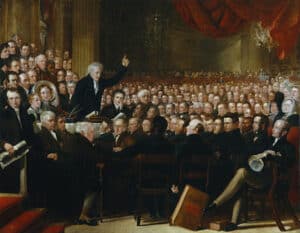
Aa depiction of the World Anti-Slavery Convention in 1840. - The act did not apply to any of the territories governed by the East India Company, including the islands of Ceylon and Saint Helena, a notable exception to the rest of the British Empire.
- The East India Company had independently regulated and partially made the slave trade illegal in these territories since 1774, with rules prohibiting slavery, sales without a written deed, and the transport of enslaved into company territory.
- In addition to prohibiting company personnel from owning or trading enslaves, the Indian Slavery Act of 1843 granted enslaved people limited legal protection, including the power to possess, transfer or inherit property, presumably benefiting the 8 to 10 million enslaved thought to exist in company territory.
- In 1839, the Anti-Slavery Society's successor, the British and Foreign Anti-Slavery Society, was founded in London with the mission of abolishing slavery across the world. It still exists today as Anti-Slavery International, making it the oldest international human rights organisation in the world.
- Despite being against the law, clandestine slave trade persisted inside the British Empire. Nathaniel Isaacs, the proprietor of the island of Matakong off the coast of Sierra Leone, was charged with slave trade in 1854 by Sir Arthur Kennedy, the country's governor.
- The Forerunner's sinking off the coast of Madeira in October 1854 resulted in the loss of documents pertaining to the allegations. The English courts decided not to pursue the prosecution since the papers were missing.
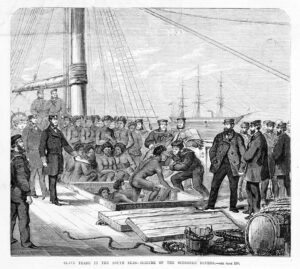
In 1869, HMS Rosario intercepted the blackbirding schooner Daphne and freed its passengers. - Other kinds of forced labour, like indentured slavery and blackbirding, were not prohibited by the legislation.
- Blackbirding entails the deceit or kidnapping of individuals in order to enslave or poorly compensate labourers in foreign nations. During the 19th and 20th centuries, the word was most frequently used to refer to the large-scale removal of indigenous people from the various islands of the Pacific Ocean.
- Human trafficking and incarceration for forced or mandatory labour are both forms of modern slavery that still exist today.
- The Statute Law (Repeals) Act 1998 completely revoked the Slavery Abolition Act of 1833. The repeal did not make slavery lawful again, with provisions of the Slave Trade Acts of 1824, 1843 and 1873 remaining in force.
- Instead, the Human Rights Act 1998 puts into British law Article 4 of the European Convention on Human Rights, which forbids slavery.

